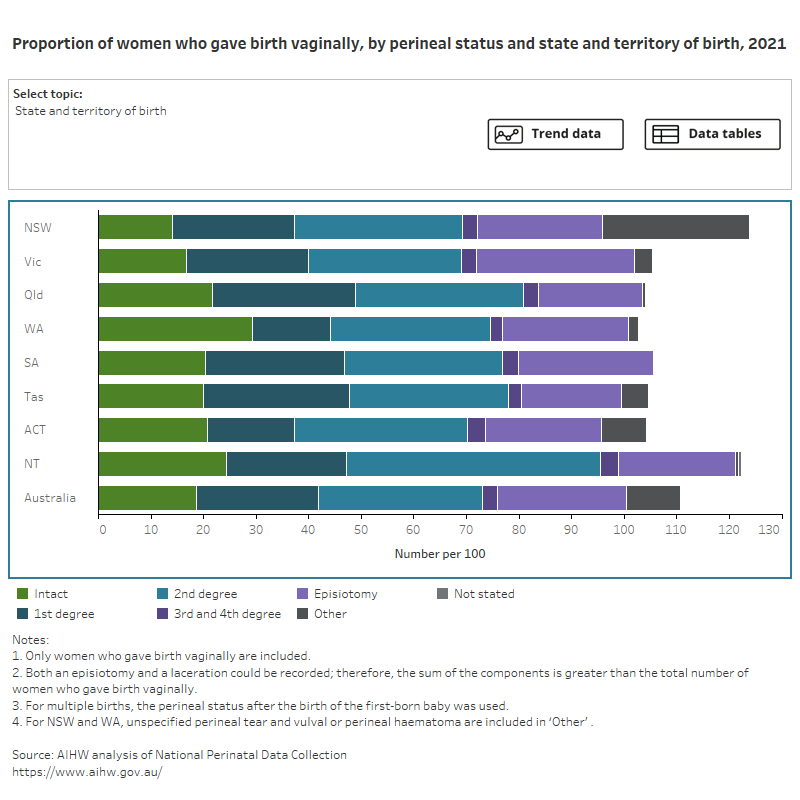Perineal status
Perineal status refers to the state of the perineum after vaginal birth. Perineal status is categorised as intact, first degree laceration, second degree laceration, third or fourth degree laceration, episiotomy or other type of perineal laceration, rupture or tear. An episiotomy is an incision of the perineum and vagina to enlarge the vulval orifice. Data are specific to women who gave birth vaginally.
Nearly 1 in 5 (19%) mothers had an intact perineum. Where the perineum was not intact, second degree lacerations were most common (31%), followed by first degree lacerations (23%). Only a small proportion of women had a third or fourth degree laceration (less than 3%).
Figure 1 presents data on the perineal status of women who gave birth vaginally, by selected maternal characteristics, for 2021. Select the trend button to see how data has changed over an 8-year period.
Figure 1: Proportion of women who gave birth vaginally, by perineal status and selected topic
Bar chart shows perineal status by selected topics and a line graph shows topic trends between 2014 and 2021.

Around 1 in 4 (25%) mothers had an episiotomy, noting that women could be recorded as having both an episiotomy and some degree of laceration.
Internationally, Australia’s rate of third- and fourth-degree lacerations was higher than the average for Organisation for Economic Co-operation and Development (OECD) countries in 2019 or nearest year for both non-instrumental and instrumental vaginal births:
- 2.2 per 100 non-instrumental vaginal births compared with the OECD average of 1.4
- 5.7 per 100 instrumental vaginal births compared with the OECD average of 5.3 (OECD 2023).
Variation between countries is likely to be affected by differences in clinical practice and reporting (ACSQHC 2018).
For related information see National Core Maternity Indicators:
For more information on births by state and territory see National Perinatal Data Collection annual update data table 2.45.
References
ACSQHC (Australian Commission on Safety and Quality in Health Care) (2018) The second Australian atlas of healthcare variation, ACSQHC, accessed 3 January 2018.
OECD (Organisation for Economic Co-operation and Development) (2022) Health at a glance 2021: OECD indicators , OECD, accessed 9 June 2023.


